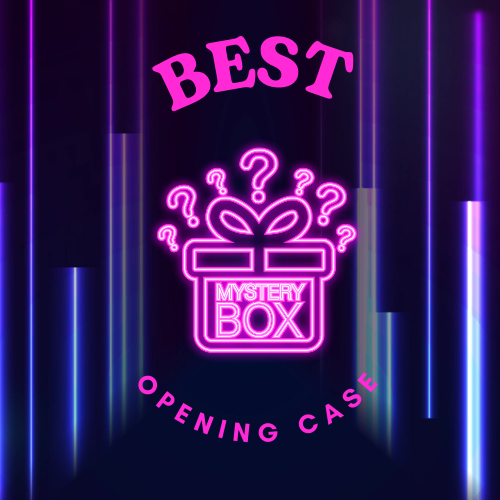
The rise of the mystery box economy has created a unique ecosystem where surprise, scarcity, and speculation collide. Originally designed as a fun and engaging way to gamify the shopping experience, mystery boxes have rapidly evolved into commodities of their own. One of the most intriguing developments within this space is how limited supply has triggered not only demand but also a secondary market defined by scalping, flipping, and resale culture. Understanding this evolution requires diving into consumer psychology, supply chain manipulation, and the emerging behaviors that have turned mystery boxes into high-stakes products.
Scarcity as a sales weapon
Mystery box platforms often engineer scarcity to create urgency. Limited edition drops, seasonal exclusives, and countdown timers transform a simple product offering into an event. This strategy is familiar in industries like sneaker culture or concert ticket sales, but within the context of mystery boxes, it carries additional emotional weight.
The scarcity doesn’t just increase perceived value, it enhances the emotional investment. When consumers believe they are getting access to something rare, the act of purchasing becomes a badge of exclusivity. This triggers the fear of missing out, which is especially potent in the fast-moving, hype-driven world of online retail. Limited supply taps into the same psychological mechanisms that drive people to queue overnight for a product launch.
Creating artificial demand
Some mystery box platforms intentionally throttle supply. Instead of flooding the market with available boxes, they release small batches, staggered over time. The result is not just an increase in excitement, but the illusion that demand is outpacing supply. When users see items sell out within seconds, it creates a feedback loop. People begin to believe they must act quickly and often irrationally.
This scarcity-driven model benefits platforms in two ways: it raises perceived value and encourages rapid purchases. But more importantly, it lays the foundation for a resale economy where mystery boxes—or the contents inside—can be flipped for profit.
The birth of the resale market
As with sneakers, trading cards, and concert merch, mystery boxes and their contents have given rise to robust resale communities. What started as casual collectors trading duplicates has grown into organized marketplaces, complete with pricing charts, demand tracking, and influencer speculation.
Resellers analyze trends, anticipate which drops will be in demand, and buy in bulk to secure inventory. Once the product is sold out, they relist items on secondary platforms at marked-up prices. Sometimes, the box itself remains sealed, with resellers gambling that the mystery of the unopened product is enough to justify the higher cost. Other times, individual items are separated and sold based on perceived rarity or fan appeal.
Flipping the box, not just the contents
Interestingly, in some segments of the market, the sealed mystery box has more value than its contents. This is especially true when the box is associated with a limited run or a popular collaboration. The unknown becomes part of the appeal. Buyers pay more for the « chance » rather than the actual object. This blurs the line between shopping and gambling, creating ethical concerns but also feeding a thriving speculative economy.
For some flippers, it’s no longer about opening boxes at all. It’s about acquiring them at retail price and reselling them to those who missed the drop. This has led to bots and automated purchasing systems being deployed on some platforms, mimicking the arms race seen in the sneaker world. It’s not uncommon for high-demand boxes to sell out in under a minute.
Price inflation and accessibility gaps
The emergence of scalping and resale inevitably leads to price inflation. What was once a $50 mystery box may now fetch double or triple that on secondary markets. This reduces accessibility, especially for casual fans or younger users who can’t afford inflated prices.
It also changes the perception of the product itself. Rather than being a fun experience rooted in discovery, the mystery box begins to resemble an investment vehicle. Consumers treat boxes like stock portfolios, analyzing which releases yield the highest returns and tracking their unboxing outcomes to measure value.
Social media and speculative hype
Platforms like TikTok, YouTube, and Discord play a major role in feeding the resale economy. Influencers unbox rare items, celebrate wins, or even boast about profits made from flipping. These moments become viral content, encouraging others to buy into the experience—not just for the reward, but for the perceived prestige.
As a result, hype can inflate overnight. A single viral video or influencer endorsement can cause demand to skyrocket. Communities begin speculating, predicting which upcoming boxes will sell out fastest, and preparing strategies to get in early. In some cases, entire Discord servers are dedicated to drop monitoring, alerting members the second a new box becomes available.
The role of platforms in regulating scalping
Some mystery box platforms have attempted to fight back against scalping. They implement purchase limits per account, use CAPTCHAs to block bots, or require pre-registration for drops. Others have experimented with lottery systems or randomized queues to level the playing field.
However, these measures have mixed success. Scalpers often find workarounds, using multiple accounts or advanced bot scripts. Meanwhile, legitimate users may be frustrated by the limited availability. Balancing demand and fairness remains one of the biggest challenges for companies trying to maintain integrity without alienating their core customers.
Brand partnerships and manufactured hype
Some brands knowingly collaborate with mystery box platforms to create hype-driven releases. Limited drops, celebrity endorsements, or influencer tie-ins are all designed to amplify demand. While this drives initial sales, it also fuels the resale fire. Buyers don’t just want the product—they want what it represents: status, clout, and exclusivity.
In some cases, the aftermarket becomes so profitable that brands lean into it, designing items specifically to attract resellers. These releases are built to generate headlines, boost visibility, and cultivate a sense of mystique. The mystery box becomes a tool of cultural relevance, as much a statement piece as a consumer good.
Psychology of flipping: risk vs. reward
What drives someone to participate in the resale market? For some, it’s about quick profits. For others, it’s the thrill of timing the market correctly. The same psychological mechanisms that power mystery box excitement also drive flipping: the anticipation, the unpredictability, the potential for high reward.
But it’s also about community. Many flippers share tips, discuss strategies, and even collaborate on bulk buys. This creates a subculture within the broader mystery box space—one built not around unboxing but around business.
Long-term effects on consumer trust
While the resale economy creates opportunities, it also poses risks for the longevity of the mystery box trend. As prices soar and boxes become harder to access, casual users may feel excluded. Disappointment grows when boxes are bought up by bots or when resale prices are unaffordable.
Worse, the presence of flippers can make the experience feel less authentic. What was once about surprise and delight now feels transactional. Platforms that fail to address this may lose credibility over time, especially if users feel exploited by artificial scarcity or predatory resale practices.
Navigating the future of supply-driven demand
As the mystery box economy matures, companies will need to find new ways to balance hype, accessibility, and ethical responsibility. This could include integrating blockchain to authenticate box origins, offering tiered pricing models, or building exclusive content and rewards into the experience.
Ultimately, the mystery box has become more than a product—it’s a cultural symbol. How platforms manage scarcity, resale, and user expectations will determine whether the model continues to grow or burns out under the weight of its own hype machine. The key will be maintaining the magic of the mystery while ensuring that it’s not just available to the highest bidder.
